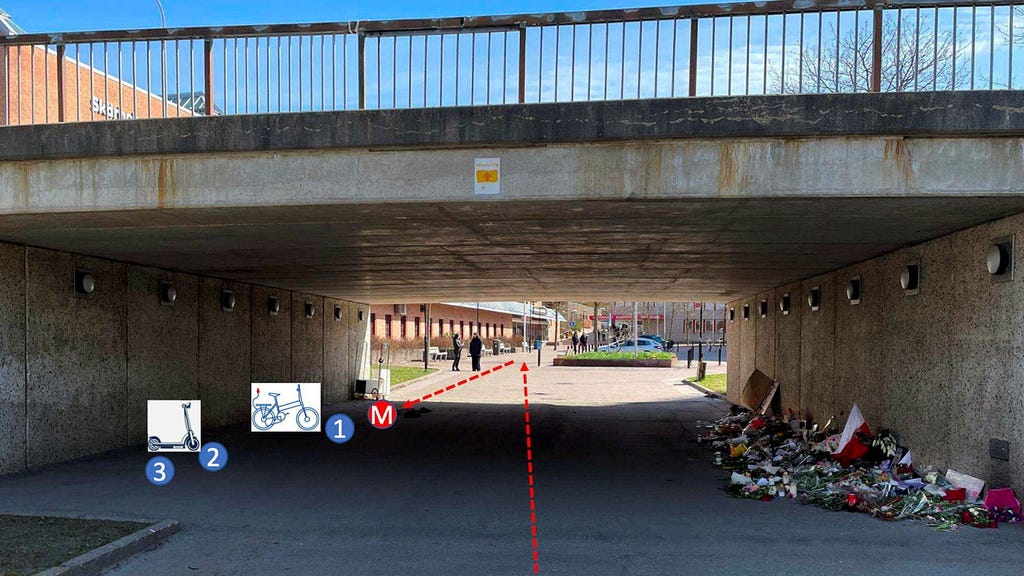The murder of 39-year-old Mikael in a pedestrian tunnel in Skärholmen, south Stockholm, sent shockwaves across Sweden. The horrific incident unfolded in April of the previous year as Mikael and his 12-year-old son were on their way to a local swimming pool. The trial commenced with an 18-year-old as the primary defendant, accused of being responsible for Mikael’s death. This young man, initially tight-lipped during police interrogations, offered a slightly more vocal defense in court, acknowledging his troubled past and associations with a ”rough crowd” but vehemently denying any involvement in the murder. He refrained from providing his account of the events, claiming discomfort discussing the specifics. When pressed by the prosecutor about his feelings regarding the shooting, he admitted it was ”terrible” but refused to comment on whether he called for medical assistance after Mikael was shot.
The courtroom proceedings continued with the testimony of a second 18-year-old, charged with aggravated protection of a criminal. This individual admitted to being present in the tunnel but claimed to have been preoccupied with his phone and thus largely unaware of the unfolding altercation between Mikael and another individual. He recalled hearing an argument but couldn’t decipher the words, followed by the sound of gunshots. He admitted to being shocked and fleeing the scene, only glancing back to see Mikael lying motionless on the ground. Throughout the trial, the memory of Mikael remained vivid in the community, with candles and flowers adorning the pedestrian tunnel where his life was tragically cut short.
Preceding these live testimonies, the court heard a recorded interview with Mikael’s son, who, despite being visibly traumatized by the horrific experience, provided a coherent and detailed account of the events leading up to the shooting. The boy recounted how he and his father had stopped their bicycles just past the tunnel where the group of young men were standing. Although he didn’t hear any specific words exchanged, he sensed a potential confrontation. His father instructed him to wait inside the swimming pool while he returned to the tunnel. However, the boy chose to remain outside the entrance, inadvertently becoming a witness to the unfolding tragedy. He expressed a premonition of something bad happening, admitting fear as his father approached the group. He recalled his father’s anger and intention to ”talk to” or ”deal with” the young men, whom he referred to as ”punks.” He also revealed his father’s past struggle with a brain hemorrhage that had impacted his personality, making him prone to anger and impulsive actions.
The son’s testimony detailed the events within the tunnel, describing how one of the men placed a hand on his father’s shoulder before the accused drew what was later identified as a modified air gun, aiming it at his father’s head. Mikael tried to wrest the weapon away but was unsuccessful. A shot was fired, hitting the ground near Mikael’s feet. Mikael then charged at the gunman, attempting to shield his head with his arms. Two more shots rang out, and Mikael collapsed. This chilling account provided a stark, first-hand perspective of the incident, further deepening the gravity of the situation.
A picture presented as evidence showed the accused posing with what is believed to be the murder weapon, painting a disturbing image of the young man’s apparent disregard for the gravity of his actions. This image stood in stark contrast to the ongoing tributes to Mikael, highlighting the devastating consequences of the events that unfolded in that pedestrian tunnel. Beyond the courtroom proceedings, the tragedy’s ripple effect was evident in the palpable grief and frustration of Mikael’s family. His brother-in-law, Elias, present throughout the trial, spoke of the unsettling experience of being in such close proximity to the accused. He described the arduous journey of attending the trial and the renewed surge of grief as the proceedings forced them to relive the traumatic events.
Elias expressed particular frustration at the accused’s evasiveness, their frequent ”no comment” responses fueling his suspicion and adding another layer of difficulty to the family’s grieving process. The trial, while aiming to deliver justice, also underscored the deep emotional wounds inflicted by this senseless act of violence. It highlighted the long and painful road ahead for Mikael’s family as they navigate the legal proceedings while simultaneously grappling with their profound loss. The case, tragic in every aspect, served as a stark reminder of the devastating impact of youth violence and the urgent need for societal interventions.














